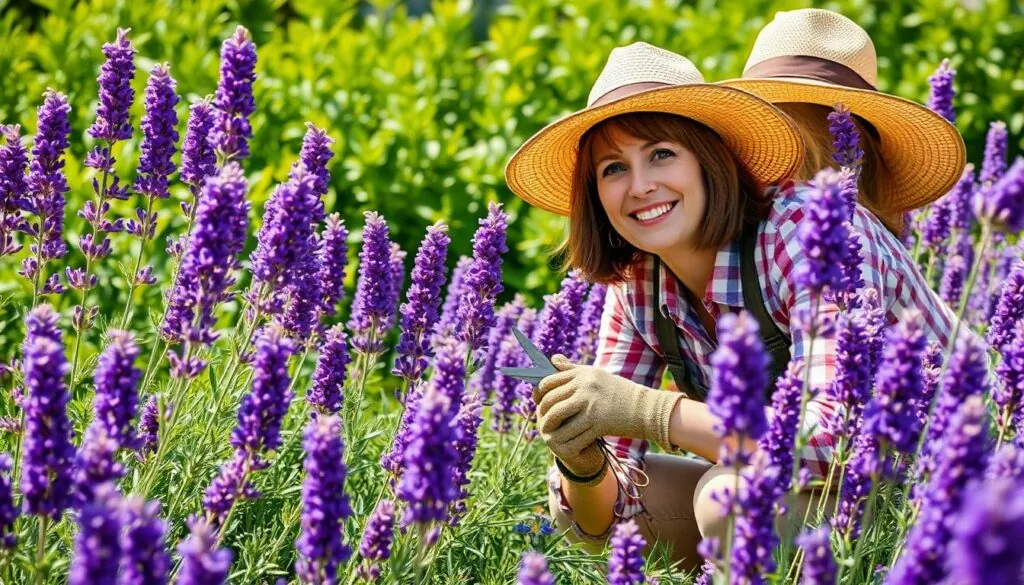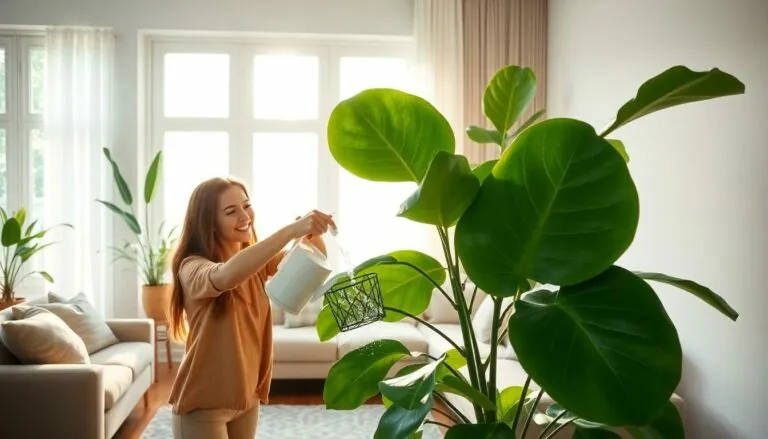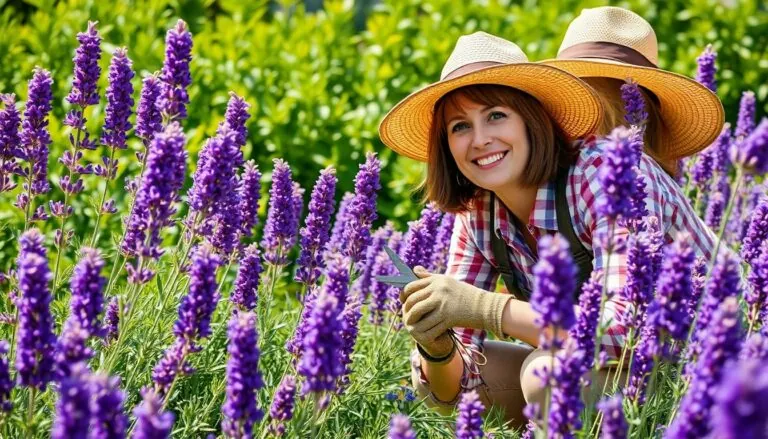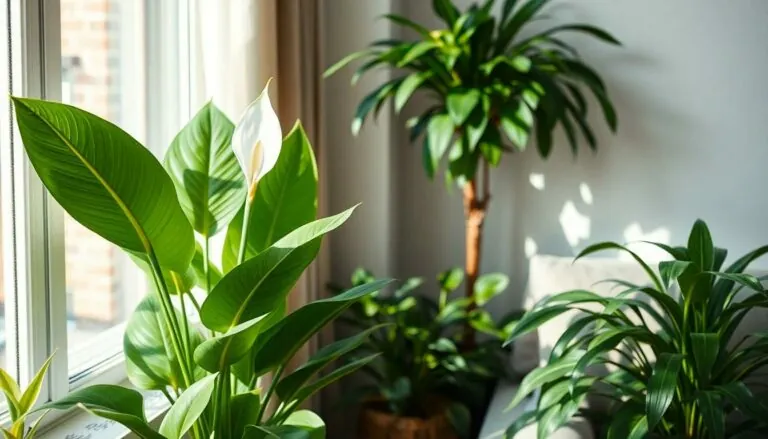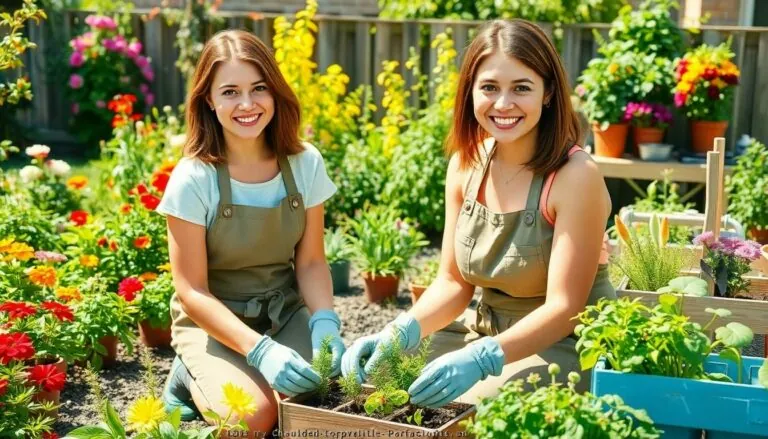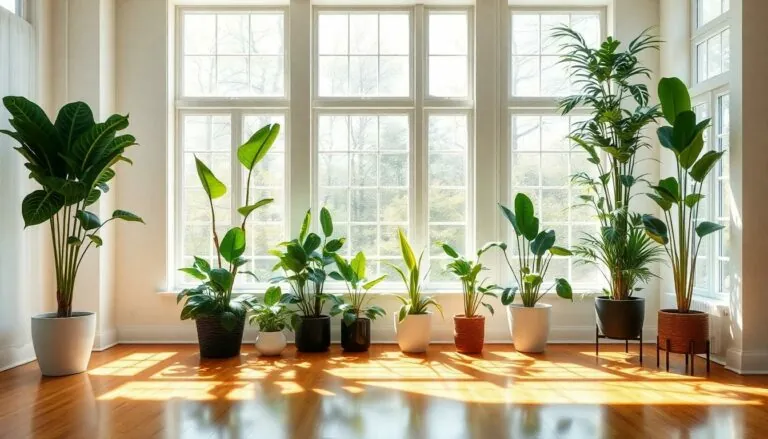Table of Contents
ToggleLavender plants are like the rock stars of the garden world—fragrant, beautiful, and surprisingly easy to care for. Imagine stepping outside to a burst of purple blooms that not only brighten your day but also fill the air with a soothing aroma. Who wouldn’t want that?
But before you rush to the nearest nursery, it’s important to know that these aromatic beauties have their quirks. They thrive on neglect and prefer to bask in the sun rather than be pampered with too much water. With the right care, your lavender can become the envy of the neighborhood. So let’s dive into the essential tips that’ll transform your lavender from a mere plant into a fragrant masterpiece.
Overview of Lavender Plants
Lavender plants belong to the Lamiaceae family, known for their aromatic and resilient nature. These perennial herbs thrive in well-drained soil and full sunlight, typically requiring at least six hours of direct light daily. Growing lavender is easy when gardeners pay attention to water needs and soil conditions.
Different lavender species, such as English lavender (Lavandula angustifolia), French lavender (Lavandula dentata), and Spanish lavender (Lavandula stoechas), each offer unique characteristics. English lavender tends to be the most popular, often favored for its fragrance and hardiness. French lavender features distinctive foliage and blooms, while Spanish lavender attracts gardeners with its unique flower shape.
Growing lavender in pots is possible, provided there’s sufficient drainage. Container gardening allows easy placement in sunny spots, creating versatility in garden design. Pruning occurs after flowering, promoting new growth and maintaining shape.
Fertilization remains minimal since lavender prefers nutrient-poor soils. Applying a balanced fertilizer once in early spring supports healthy growth without overwhelming the plant. Pest resistance characterizes lavender, with its strong aroma deterring common garden nuisances.
Longevity of lavender makes it a wise choice for gardens. With proper care, these plants can thrive for years, providing beauty and aroma to the landscape. Their drought-tolerant nature contributes to low maintenance, appealing to many gardeners. Overall, lavender’s aesthetic appeal and fragrant qualities enhance any garden setting.
Ideal Growing Conditions
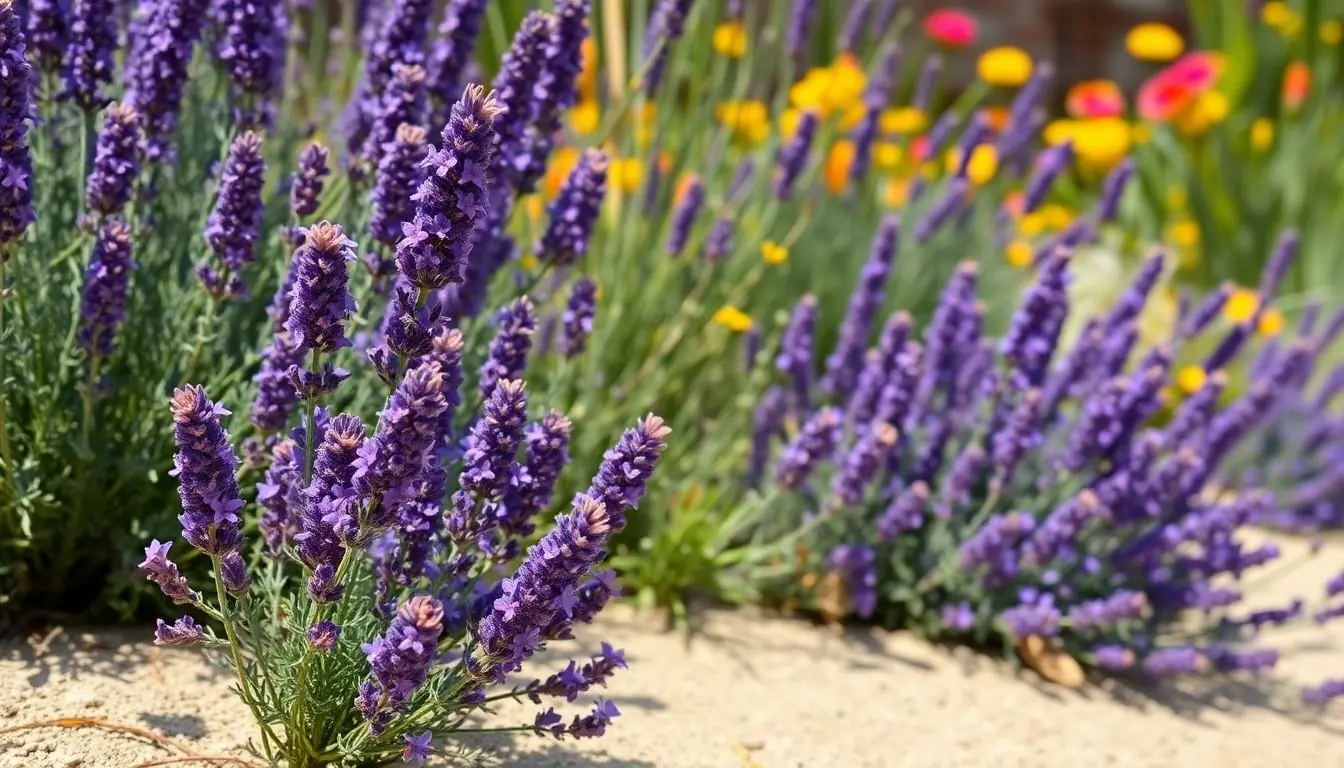
Lavender thrives under specific conditions that enhance its growth and flowering potential. Understanding its soil and sunlight preferences proves essential for successful cultivation.
Soil Requirements
Well-drained soil serves as a foundation for healthy lavender growth. Sandy or rocky soils provide excellent drainage, preventing root rot. A pH level between 6.5 and 7.5 supports nutrient absorption, which is vital for robust development. Excessive soil moisture can harm lavender, so incorporating organic matter into poor soils aids drainage without adding too many nutrients. Use a mix that contains sand or grit to enhance soil texture. Avoid heavy clay soils as they retain too much moisture.
Sunlight Needs
Lavender requires at least six hours of direct sunlight each day. Sunlight exposure encourages abundant blooms and enhances fragrance. Plants flourish in full sun conditions, making them ideal for sunny garden spots. Morning sunlight is preferable as it dries dew quickly, reducing fungal diseases. Positioning lavender in areas where it gets maximum sun exposure ensures healthy growth. Indoor lavender plants benefit from bright windows or grow lights, mimicking natural sunlight.
Watering and Fertilization
Lavender plants thrive with attentive care regarding watering and fertilization. Managing these two aspects properly ensures healthy growth and vibrant blooms.
Watering Frequency
Water lavender deeply but infrequently. Once a week suffices during dry spells, while reducing frequency to every two to three weeks in cooler, rainy seasons is wise. Providing water in the morning allows time for foliage to dry, helping prevent fungal issues. Overwatering can lead to root rot, so checking the soil moisture before watering is essential. Soil should dry out between watering sessions. In pots, ensure that drainage holes allow excess water to escape, preventing soggy roots.
Fertilizer Recommendations
Fertilization for lavender requires caution. Using a low-nitrogen fertilizer or a slow-release option supports growth without overwhelming the plant. Applying fertilizer in early spring, right before new growth, promotes healthy development. Organic options, such as compost or well-rotted manure, enhance soil quality while keeping nutrients balanced. Limiting fertilization to once or twice a year prevents excessive nutrient buildup, which can lead to leggy plants. Adjusting fertilizer use according to soil tests ensures that lavender receives optimum nutrients without unnecessary additions.
Pruning and Maintenance
Pruning lavender promotes healthy growth and enhances its appearance. Regular maintenance ensures robust plants and abundant blooms.
When to Prune
Pruning occurs in early spring as new growth emerges. Removing spent flowers after blooming also benefits the plant. Ideally, late summer pruning helps maintain shape and prevents woodiness. Check for signs of growth in March, then proceed with pruning before growth accelerates. Creating a habit of annual pruning supports longevity and aesthetic appeal.
Techniques for Pruning
Using sharp shears encourages clean cuts and minimizes damage. Cutting back one-third of the plant preserves its vibrant form. Focusing on the woody stems prevents potential overgrowth. Trim just above leaf nodes, promoting dense foliage. Regularly inspecting the plant also reveals areas that require additional attention. Aim for an overall rounded shape to enhance visual impact.
Common Pests and Diseases
Lavender plants, though generally resistant to pests, can encounter specific issues that affect their health. Recognizing these problems early ensures effective management and preserves the beauty of the plants.
Identifying Issues
Check for signs of aphids, which manifest as tiny insects clustered on new growth. Look for white, fluffy cotton-like masses; these indicate mealybugs, which can harm the plant. Yellowing leaves often signal overwatering or root rot, while black spots on leaves may point to fungal infections. Examine the stems for discolored patches or soft areas, suggesting sclerotinia or other diseases. Regular inspections allow for timely interventions, safeguarding the overall vigor of lavender.
Treatment Options
Utilize insecticidal soap to combat aphids effectively, as it suffocates the pests on contact. Introduce ladybugs, which naturally prey on aphids and help control their population. For mealybugs, applying neem oil can disrupt their life cycle and reduce infestations. Frequent pruning of affected areas often enhances air circulation, minimizing the likelihood of fungal issues. If root rot occurs, allowing the soil to dry completely before watering again can promote recovery. Implementing these strategies supports a thriving lavender garden while preventing pest and disease problems.
Caring for lavender plants can be a rewarding experience. With the right conditions and maintenance practices, these beautiful and aromatic plants can flourish in any garden. By ensuring they receive ample sunlight and proper drainage, gardeners can promote healthy growth and vibrant blooms.
Regular pruning and minimal fertilization are key to maintaining their shape and encouraging new growth. Additionally, staying vigilant against pests and diseases will help keep lavender thriving. With a little attention and care, lavender can provide lasting beauty and fragrance for years to come.

